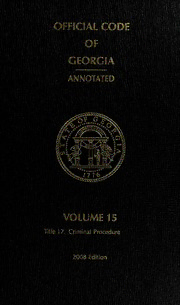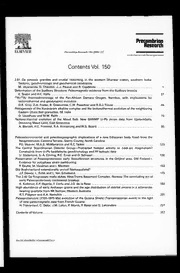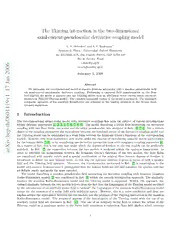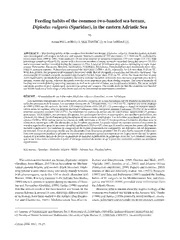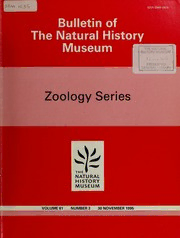
Bulletin of the Natural History Museum Zoology PDF
Preview Bulletin of the Natural History Museum Zoology
VHI S£<vi ic3 5 ISSN 0968-0470 Bulletin of The Natural History Museum THE NATURAL HISTORY MUSEUM | PRESENTED GENERA \RY Zoology Series THE NATURAL HISTORY MUSEUM VOLUME 61 NUMBER 2 30 NOVEMBER 1995 The Bulletin ofTheNaturalHistory Museum (formerly: Bulletin oftheBritish Museum (NaturalHistory)), instituted in 1949, is issued in four scientific series, Botany, Entomology, Geology (incorporating Mineralogy) and Zoology. The Zoology Series is edited in the Museum's Department of Zoology Keeper of Zoology: Dr C.R. Curds Editor of Bulletin: Dr N.R. Merrett Assistant Editor: Dr B.T. Clarke Papers in the Bulletin are primarily the results of research carried out on the unique and ever- growing collections of the Museum, both by the scientific staff and by specialists from elsewhere who make use of the Museum's resources. Many ofthe papers are works of reference that will remain indispensable for years to come. All papers submitted for publication are subjected to external peer review for acceptance. A volume contains about 160 pages, made up by two numbers, published in the Spring and Autumn. Subscriptions may be placed for one or more of the series on an annual basis. Individual numbers and back numbers can be purchased and a Bulletin catalogue, by series, is available. Orders and enquiries should be sent to: Intercept Ltd. P.O. Box 716 Andover Hampshire SP10 1YG Telephone: (01264) 334748 Fax: (01264) 334058 Claims for non-receipt of issues ofthe Bulletin will be met free ofcharge if received by the Publisher within 6 months for the UK, and 9 months for the rest of the world. World List abbreviation: Bull. nat. Hist. Mus. Lond. (Zool.) © The Natural History Museum, 1995 Zoology Series ISSN 0968-0470 Vol. 61, No. 2, pp. 91-138 The Natural History Museum Cromwell Road London SW7 5BD Issued 30 November 1995 Typeset by Ann Buchan (Typesetters), Middlesex Printed in Great Britain atThe Alden Press, Oxford Bull. nat. Hist. Mas. Lond. (Zool.)61(2): 91-101 Issued30November 1995 Preliminary studies on a mandibulohyoid 'ligament' and other intrabuccal connects THE NATURAL tissue linkages in cirrhitid, latrid and HISTORY MUSEUM cheilodactylid fishes (Perciformes : PRESENTED Cirrhitoidei) GENERAL LIBRARY PETER HUMPHRY GREENWOOD1 Visiting Research Fellow, The NaturalHistory Museum, CromwellRoad, London SW75BD and Honorary Research Fellow, J.L.B. Smith InstituteofIchthyology, Private Bag 1015, Grahamstown, 6140South Africa CONTENTS Introduction 91 Materialand Methods 92 Ligamentousandotherconnective tissue linkagesbetween the mandible, the palatoquadrate, the hyoidarch andtheopercularseries in threecirrhitoid families 93 The familyCirrhitidae 93 The family Latridae 93 The family Cheilodactylidae 97 Discussion andConclusions 98 , Acknowledgements 100 References 101 Synopsis. In certain taxa of at least three groups of percomorph fishes belonging to the cirrhitoid families CirrhitidaeandLatridae,thereisaconnectivetissue linkagebetweenthemandibleandthehyoidarch,suggestiveof themandibulohyoidligamentdescribedincertainsub-percomorphgroups.Thisligamentisgenerallythoughttobea featureoflowerteleostfishes,althoughamandibulohyoidconnectionhasalsobeen identifiedinafewmorederived taxa. The mandibulohyoid connection in the Cirrhitidae examined would appear to originate from the tendinous aponeurosis associated with the Aw division of the adductor mandibulac muscles, but its derivation in the latrid speciesAcantholatrismonodactylus remains undetermined. The Aw aponeurosis in A. monodactylus, as well as in the latrid Mendosoma, and in two genera of Cheilodactylidae (viz. Chirodactylus and Cheilodactylus) ramifies extensively over the paladoquadrate arch and part of the opercular series. This system, together with various intrabuccal ligamentsisdescribed from representativesofthe threecirrhitoid familiesstudied. It is concluded that, contrary to several earlier ideas, a mandibulohyoid linkage is of taxonomically and phylogenetically widespread occurrence in teleosts but that it might be derived from different connective tissue sources. The valueofthisconnective tissuecomplex in phylogeneticstudieshasyettobeestablished, butitappears tobeofuse in at leastestablishingintragroup relationshipswithin the Cirrhitoidei. INTRODUCTION and ligament-like connections between the ceratohyal and mandible in some cirrhitid species, and a third type found in one of the latrid species examined (family placement after A recent anatomical study of certain cirrhitoid fishes (sensu Greenwood, 1995). These linkages invite comparison with Greenwood, 1995) has revealed a numberofmarkedlydiffer- the so-called mandibulohyoid ligament generally thought to ent ligament and tendon systems which separately or con- be commoner in lower teleosts than in perciform taxa, or jointly link the mandible with the hyoid arch, the even restricted to the former groups (see Verraes, 1977; palatoquadrate arch and the opercular series. Some of these Lauder& Liem, 1980; Lauder, 1982; butsee also Osse, 1969, connections have a degree of complexity not previously Springer et al, 1977, and Aerts et ai, 1987 for certain recorded among teleost fishes. perciforms, and Anker, 1974, for gasterosteiforms). A man- Ofparticular functional interest are the two types ofdirect dibulohyoid ligament also occurs in the semionotiform lepi- sosteids Lepisosteus and Atractosteus (Wiley, 1976). tDrGreenwooddied3March 1995. ©TheNaturalHistoryMuseum, 1995 2-^^° #2^ 92 PH. GREENWOOD The nature of the hyoid-mandibular connection in the Method cirrhitoids, a derived percomorph group (Greenwood, 1995), and that described in other teleosts and in the Lepisosteidae, The entire opercular series, palatopterygoid arch and hyoid raises doubts about the strict homology of the connection in arch ofone side, together with the mandible, premaxilla and these various taxa. maxilla of that side, were dissected away from the head. Functionally, itwould seemthatamandibulohyoidconnec- Muscles, tendons and ligaments were examined on the dis- tion is of importance both in adults (see Aerts et al., 1987) sected side, and checked on the contralateral aspect which and in early larval stages (Verraes, 1977); its phylogenetic was left insitu. historyin thiscontextisdiscussed at length by Lauder(1982). All specimens had been fixed in formalin and preserved in Regrettably, the feeding studies on cirrhitoids, from which eitherethyl or propyl alcohol. this anatomical study arose, are not sufficiently advanced or In the absence of ontogenetical information on the devel- refined to allow informed speculation on any correlation opment ofligamentousand tendinous systemsin these fishes, between the morphology and the feeding habits of these ligamentsand tendonsin the varioustaxa are presumed to be fishes. Furthermore, many other cirrhitoid taxa remain to be homologous iftheir places oforigin and insertion are similar. studied before itwill be possibletoevaluatewhatsignificance the different types of intragroup mandibulohyoid and other linkages (or absence thereof) may have in unravelling the taxonomy and phyletic relationships ofthe group. Neverthe- less, there are indications from this study, and from informa- ABBREVIATIONS FOR FIGURES tion in the literature on various forms of mandibulohyoid connections, that furtherinvestigations may yield insight into Abbreviationsfortendons and ligaments are given separately the biomechanics offeeding and into historical relationships. with each figure. Muscles: MATERIALS AND METHODS Add. mand I u & m: Adductor mandibulae A, upper and main divi- Material sions respectively Aw: Aw division ofadductor mandibulae muscle Clupeidae: Etrumeus terres. RUSI 34140 (1 speci- Awt: Tendinous aponeurosis of adductor mandibulae men) Aw Salmonidae: Oncorhynchus mykiss RUSI 36417 (3 Geh: Geniohyoideus specimens) Im: Intermandibularis Characidae: Hydrocynus vittatus RUSI 19355 (1 St: Sternohyoideus specimen) Cirrhitidae: Amblycirrhitusbimacula RUSI77-20(3 specimens) Skeletal elements: Cirrhitichthys oxycephalies RUSI 40526 (3 specimens) Ang: Anguloarticular Cirrhitopsfasciatus RUSI 2375 (1 speci- Bb: 1st basibranchial men; ex Hawaii) Ch: Ceratohyal Cyprinocirrhites polyactis RUSI 12339 Dt: Dentary (3 specimens) Ect: Ectopterygoid Paracirrhites arcatus RUSI 30975 (2 Ent: Entopterygoid specimens) Epi: Epihyal Paracirrhites forsteri RUSI 39419 (3 F: Raised facet for articulation with epihyal specimens) Ga: Gill arch Latridae: Acantholatris monodactylus RUSI Hyom: Hyomandibula 33485 (2 specimens) Hyp: Hypohyals Mendosoma lineatum Ihyl: Interhyal RUSI 33613 (1 specimen) lop: Interoperculum RUSI 33626 (1 specimen) Max: Maxilla RUSI 26176 (1 specimen) Mt: Metapterygoid Cheilodactylidae: Cheilodactylusfasciatus DIFS unreg. (2 Pal: Palatine specimens) Pop: Preoperculum Cheilodactylus pixi DIFS unreg. (3 Q: Quadrate specimens) R: Retroarticular Chirodactylus brachydactylus DIFS Sy: Symplectic unreg. (3 specimens) V: Vomer DIFS: Department of Ichthyology and Fisheries Science, RhodesUniversity, Grahamstown. RUSI: J.L.B. Smith Insti- tute ofIchthyology, Grahamstown. MANDIBULOHYOID CONNECTION IN CIRRHITOID FISHES 93 LIGAMENTOUS AND OTHER CONNECTIVE that division of the muscle inserting on the maxilla through TISSUE LINKAGES BETWEEN THE both the ligamentumprimordium and the maxillary ligament of adductor mandibulae A, muscle. In all three groups the MANDIBLE, THE PALATOQUADRATE, THE major (ie lower) division of the muscle is attached to the HYOID ARCH, AND THE OPERULAR SERIES ligamentum primordium and the maxillary ligament, the IN THREE CIRRHITOID FAMILIES latter inserting on the ventral aspect of the maxilla, and the formeron the bone's dorsolateral aspect. Other intergroup differences involve the epihyal- The family Cirrhitidae interopercular and the interhyal-interopercular ligaments (For comparison of these and other ligaments with the On the basis of their mandibulohyoid connections, two situation in othercirrhitoid families, see pp. 94 and pp. 97-98 distinct groups can be recognised within the cirrhitid species and Figs 2-4). Group II species have the latter ligament examined. A third group, represented by Amblycirrhitus partly associated with the epihyal as well as the interhyal, as bimacula (Jenkins), has no macroscopically detectable man- does the single Group III species dissected; in Group I taxa, dibulohyoid linkage (see below). however, the ligament is confined to the interhyal. The Group I species (viz. Cyprinocirrhitespolyactis [Bleeker], epihyal-interopercular ligament shows more marked inter- Cirrhitichthys oxycephalic [Bleeker] and Cirrhitopsfasciatus group differences, especially when species of Group I are [Bennett] have a stout, ligament-like connection between the compared with those of the other two groups, a difference ceratohyal of each side and the coronoid process of the possibly associated with the manner in which the epihyal corresponding dentary ramus (Fig. 1A). Group II species contacts the interoperculum. In Group II taxa, the lateral {viz. Paracirrhitesarcatus [Cuvier] and P.forsteri [Schneider] face of the epihyal head articulates with a well-defined, also have a ligament-like band of tissue stemming from the prominently raised and posteriorly directed facet situated a lateral aspect ofeach ceratohyal, but here it links each hyoid little below the dorsal margin of the interoperculum and arch with, predominantly, the corresponding quadrate, on slightly behind the bone's midpoint. The epihyal- which it inserts immediately above that bone's process for interopercular ligament in these fishes is short and stout, articulation with the anguloarticular. Part of this tissue, originateson the lateral face ofthe epihyal nearits dorsal tip, however, isapparentlycontinouswith the tendinousinsertion and runs forward at approximately 45 to the sagital plane. It of the Aw division ofthe adductor mandibulae muscle, (Fig. inserts on the upper and anterior faces of the prominence 1C). There is no macroscopically obvious and clearly defined supporting the facet on the interoperculum against which the connective tissue linkage between the mandible and hyoid epihyal articulates.A similar epihyal-interopercular ligament arch in Amblycirrhitus bimacula (hereafter referred to as occurs in the single Group III species examined, viz. Ambly- Group III). cirrhitus bimacula. However, in this species, unlike those of In all three groups the adductor mandibulae Aw division Group II, the interopercular facet is located on a relatively originates on the quadrate through a posterior extension of lower base. the muscle's tendinouscentral aponeurosis, and thus is ofthe The epihyal-interopercular ligament is most distinctive in basic perciform type as defined by Gosline (1986). The Group II. In species of this group (unlike the other groups) extension is well-demarcated and moderately deep, and lies the epihyal articulates directly with the medial face of the across the quadrate-anguloarticular joint. Amblycirrhitus interoperculum and not with a facet carried on a distinct and bimacula (the single Group III species examined) is excep- elevated base (albeit only slightly so in the single Group III tional in this respect because the tendon lies very slightly species examined). The ligament itselfis a prominent feature above the jaw articulation. Members ofall three groups have originating (as in other groups) on the dorsal tip of the Aw the fascia covering the muscle extending posteriorly onto epihyal's lateral face, from which it runs anteriorly onto the the lower halfofthe quadrate, part ofthe preoperculum, and dorsal margin of the interoperculum at a point near the the upper margin ofthe interoperculum as well. bone's anterior tip, where it is narrowly separated from the Within the three speciesofGroup I there are differences in attachment point of the mandibulo-interopercular ligament the association between the mandibulohyoid connection and (cf. Acantholatris monodactylus Fig.3 & p. 94). the tendon of the adductor mandibulae A, muscle inserting A short interhyal-metapterygoid ligament is present in all on the maxilla. Cyprinocirrhitespolyactis is unique in having three groups. what appears to be a short branch of the mandibulohyoid Nointerhyal-preopercular ligament is present in anyexam- connection arising near the latter's attachment to the coro- ined species of the three groups (cf. the other cirrhitoids noid process of the dentary and then joining the maxillary described below). tendon of the adductor mandibulae A, muscle (Fig. 1A). In Astout mandibulo-interopercular ligament (Fig. 1C; lig. 3) Cirrhitichthysoxycephalicand Cirrhitopsfasciatus, the maxil- is present in taxa of the three groups. It is confined to the lary tendon partially fuses with the mandibulohyoid connec- lateral face ofboth elements in all species except Cyprinocir- tion at the point where the two cross over each other (the rhitespolyactisand Cirrhitichthysoxycephalus (both members latter lying medial to the maxillary tendon). From the point ofGroup I). In these twospeciesitdivides anteriorlytoinsert offusion a short section (interpreted as a continuation of the on boththelateralandthe medialaspectsofthe anguloarticu- maxillarytendon) runsinto thetendinouscentral aponeurosis lar bone. ofthe adductor mandibulae Aw muscle (Fig. IB). Also common to species of the three groups is a short and There are also intergroup differences in other ligamentous deep, ventrally located ligament connectingthe anguloarticu- and tendinous linkages (Fig. 1). Species of Groups I and III lar and dentary. have a small upper, anterior division of the adductor man- dibulae muscle A inserting onto the maxilla only via the l ligamentum primordium. Group II species, in contrast, have . 94 PH. GREENWOOD The family Latridae 2; lig. 7). This latter ligament I consider to be the homologue ofthe interhyal-quadrate ligament in Cheilodactylus, and the There are clear-cut differences in certain aspects of the ligament in Acantholatris which runs from the interhyal to ligamentous and other connective systems in the two latrid both the quadrate and the entopterygoid (see p. 98 & p. 99 species examined, namely the monotypic genus Mendosoma respectively). lineatum (Gay) and the species Acantholatris monodactylus Mendosoma has discrete lateral and medial divisionsofthe (Carmichael) ofthat polytypicgenus. Also, an upperdivision mandibulo-interopercular ligament, with the medial division of the adductor mandibulae muscle A, is absent in A. terminating a short distance behind the anterior tip of the monodactyluswhereasin Mendosomaitisanelongate, rather interoperculum (Fig. 2; lig. 6), and the lateral division thinelementwhich lieslateraltothe majorpartofthe muscle extendingmuch furtherposteriorly. and extends over the greater part of its length. The minor The anguloarticular-dentary ligament is short and stout, division, unlike the major one, has no direct connection with markedly stouter than in any cirrhitid species examined, and the ligamentum primordium and inserts on the maxilla, stouter than thatinAcantholatris. togetherwith the major division, via the maxillary tendon of As compared with the ligamentous and other connective the Aj muscle. tissuesystemsin Mendosomalineatum, those inAcantholatris In Mendosoma the adductor mandibulae Aw division is a monodactylus are considerably more complex, (as they are verythinmuscle, largelytendinousandwithasingleposterior when compared with the cirrhitid species studied). As was extension of its tendinous aponeurosis. This runs slightly noted earlier (p. 94), there is no obvious sub-division of the below the upper point of the articulation of the lower jaw adductor mandibulae A, muscle in A. monodactylus. How- with the quadrate, to which bone it is attached a short ever, anteriorly the upper third of the muscle, unlike the distance from the anteriorborder (Fig. 2; tendon 3). In other other two-thirds, is free from the ligamentum primordium words, it is of the basic percomorph type sensu Gosline and inserts on the maxilla only through the maxillary tendon, (1986), except that in Mendosoma it has one prolongation to which the major part ofthe muscle is also attached. extending along the symplectic, another running ventrally to Acantholatrismonodactylushasasubstantial Awportion of attach to the medial aspect of the preoperculum, a third, the adductor mandibulae muscle. From the muscle's directed dorsally to insert on the quadrate, and a fourth mediolateral tendinous aponeurosis a stout and relatively directed obliquely backwards to attach to the ventral aspect short branch (tendon 3 in Fig. 3) runs posteriorly to insert on ofthe interoperculum medially and anteriorly. the anteromedial aspect of the preoperculum's horizontal In all essentials, the adductor mandibulae Aw tendon limb. system's extension onto the interoperculum and preopercu- A second stout and much longer tendon from the Aw lum in Mendosoma is very similar to that in Acantholatris, muscle (tendon 5 in Fig. 3) extends from the ventral margin with that in Mendosoma, as it were, foreshadowing the more of the muscle above the anguloarticular bone, and runs & clearly differentiated condition in Acantholatris (cf. Figs 2 obliquely backwards to attach to the medial aspect of the 3). interoperculum ashortdistance from that bone'santeriortip. Thereisno ligament-likeconnection betweenthe mandible This tendon, unlike tendon 3, is not derived from the and hyoid arch in Mendosoma (cf. Acantholatris; Fig. 3). aponeurosis of the adductor mandibulae Aw muscle but The epihyal-interopercular ligament is stout and short, originates directly from the muscle itself. Immediately after connecting the lateral aspect of the epihyal with the dorsal its origin, tendon 5 is attached to the anterodorsal aspect of margin of the interoperculum a short distance anterior to its the anguloarticular'smedialface. Itthen passesoverthatface slightly raised facet for articulation with the epihyal. Unlike ofthe retroarticular, and attaches to the medial aspect ofthe the backward-facing facet in those cirrhitids in which it interoperculum a short distance from the bone's anterior tip. occurs,thatinM. lineatumfacesforward(Fig. 2), asitdoesin Since this tendon links the mandible with the interoperculum the other latrid examined (Acantholatris monodactylus; and it would appear to be the functional equivalent of the in the cheilodactylids dissected). mandibulo-interopercular ligament in the other species A discrete interhyal-interopercular ligament (present in described above. However, a true and very long mandibulo- cirrhitids) is apparently lacking in M. lineatum (asit is also in interopercular ligament is also present in A. monodactylus Acantholatris, and Cheilodactylus) (Fig. 3; lig. 6). Anteriorly it has an extensive attachment to Like the two latter genera, but not in the cirrhitids exam- the lateral face of the anguloarticular and retroarticular ined, Mendosoma has a well-developed interhyal- bones, as well as another on the posterior face of the preopercular ligament and another, more dorsally placed retroarticular. From here the ligament extends across to, and ligament between the interhyal and the metapterygoid (Fig. Fig. 1 A: Cyprinocirrhitespolyactic(GroupIspecies) Medial aspectoftheleft lowerjaw, cheek regionand hyoidarch, viewedobliquely fromabove, toshowthe mandibulohyoidconnection (semi-schematic). The branchialskeleton isdisplaced tothe right. Abouttimes natural size. 1: Mandibulohyoidconnection; 2a: tendonfrom lowerpart ofadductormandibulaeA, muscle tomaxilla; 2b: continuationoftendon 2a,joiningtendinousaponeurosisofadductormandibulae muscle Aw. Lig. prim: Ligamentumprimordium. B: Cirrhitopsfasciatus(GroupI species) Diagramaticrepresentationofmandibulohyoidconnectionand relatedtendons; medial aspectofleft sidetodemonstrate thesecondformoftendinousrelationshipswithinspeciesofGroupI. Abbreviationsasin Fig. 1A. C: Paracirrhitesforsteri(GroupII species). Medialaspectofthe right lowerjaw,cheekregion andhyoidarch,viewedsomewhatdorsally; the branchialskeleton and hyoidarchconsiderablydisplacedto the left andposteriorlyinorderto revealthe mandibulohyoidconnection. (Semi-schematic). Abouttimesnaturalsize. 1: Posteriorportionofmandibulohyoidconnection, insertingpartlyon thequadrate, and partly continuouswithtendinousaponeurosisofthe adductormandibulae muscle Aw (Awt);2b: ventralcontinuationofmaxillarytendonof adductormandibulae muscleA,; 3: interopercular-mandibularligament;4: tendonofadductormandibulae A2 muscle; Lig. prim: ligamentumprimordium. MANDIBULOHYOID CONNECTION IN CIRRHITOID FISHES 95 Lig. prim. Add. mand. I u Lig. prim. . 96 PH. GREENWOOD Fig.2 Mendosomalineatum Medialaspectofleftlowerjaw, cheekregion, andhyoidarch. Scale = 2mm. 2a: Maxillarytendonofadductor mandibulae muscle A^2b: extensionoftendon2a,joiningtendinous aponeurosisofadductormandibulae muscleAw; 2c: tendonof adductormandibulae muscle A2; 3a&b: extensionsofadductormandibulaemuscleAw'stendinousaponeurosis;6: interopercular-mandibularligament;7: interhyal-metapterygoidligament. along, thedorsaland dorsolateralmarginsofthe interopercu- veryshort, itisstoutandhasan extensive attachment areaon lum, ending at a point about midway between the bone's the interhyal and on the preoperculum, which it joins at the anterior tip and the face of the prominent, forward-facing point where the upper, vertical arm of that bone begins to articulatory facet for the epihyal (cfpp. 94). Here it attaches curve forward to form its horizontal arm. to a slight eminence on the dorsal margin ofthe interopercu- A feature unique to Acantholatris monodactylus amongst lum. Atfirstsightthe ligament appearsto becontinuouswith the cirrhitoid taxa examined is the presence ofawell-defined the epihyal-interopercular ligament (Fig. 3; lig. 4) which also ligamentconnectingthe hyoidarch andthedentary, alinkage insertsatthatpoint. Carefuldissection reveals, however, that in no way associated with the adductor mandibulae Aw the two are separate entities (see also p. 93 and p. 94 muscle oritsaponeuroticsystem (see Fig. 3). Posteriorly, this respectively for the situation in cirrhitids and the latrid ligament is attached to the summit of a distinct prominence Mendosoma) on the anterior face of the ceratohyal and situated immedi- Apart from the more complex condition in cheilodactylids, ately below the ceratohyal-epihyal suture. Anteriorly, the this double linkage ofthe mandible with the interoperculum, ligament inserts on the dentary conjointly with the anterior one involving both tendons and ligaments, seemingly has not end of the anguloarticular-dentary ligament (see above and been recorded in any other teleosts. However, it also occurs Fig. 3; lig.l). in Mendosoma (see p. 94 and Fig. 2) where the lowermost arm of the Aw aponeurosis is attached to the anteromedial The family Cheilodactylidae aspect of the interoperculum, and in Cheilodactylus (see below, and tendon 5 in Fig. 4). The account which follows is based on dissections of Cheilo- Asin Mendosoma, the anguloarticular-dentary ligament in dactylus fasciatus Lacepede. Since the situation is virtually A. monodactylus is short and stout. identical in two other cheilodactylid species studied, Cheilo- An elongate and broad ligament (lig. 7 in Fig. 3) connects dactylus pixi (Smith) and Chirodactylus brachydactylus theupperfaceoftheinterhyalwiththequadrate and, mainly, (Cuvier), the term Cheilodactylus is used to cover all three with the entopterygoid. This connection is similar to that in taxa. What interspecific differences do exist are noted on Cheilodactylus (see Fig. 4, andp. 98), and, from its intercon- page 98. nections would appear to be homologous with the ligament Of all the cirrhitoid species examined, the ligament and joining the interhyal with the metapterygoid in Mendosoma tendonsystemsseparatelyorconjointly linkingthe mandible, (Fig. 2; lig. 7) and the cirrhitid species examined. the hyoid arch, the opercular series, and the palatoquadrate The interhyal-interopercular ligament, present in all mem- arch in Cheilodactylus are by far the most complex. The bers of the Cirrhitidae examined, is absent in the latrids and greatest similarities, however, are with those systems in the cheilodactylids dissected. An interhyal-preopercular liga- latrid Acantholatris monodactylus (cf. Figs 3 & 4). In the ment, present in the other cirrhitoids studied except the cheilodactylids examined, and likeA. monodactylus, there is cirrhitids, is also developed in Acantholatris. Here, although no obvious subdivision of the adductor mandibulae A, MANDIBULOHYOID CONNECTION IN CIRRHITOID FISHES 97 Fig.3 Acantholatrismonodaaylus Medial aspectofleft lowerjaw,cheek region and hyoid arch. Scale = 2mm. 1: Anguloarticular-dentary ligament;2a: maxillary tendonofadductormandibulae muscle A,; 2b: extensionofabove tendonjoiningtendinousaponeurosisof adductormandibulae muscle Aw; 3: tendonofAw muscle topreoperculum;4: epihyal-interopercularligament; 5: tendon from Aw muscle tointeroperculum;6: interopercular-mandibularligament;7: interhyal-quadrate-entopterygoid ligament. Dashedoutline thatofthe mandibulohyoidconnection. muscle, whoseinsertiononthe maxillaisidenticalwiththatin 5a) isassociated with an extension ofthe Aw muscle onto the the latter taxon. anguloarticular, the linkage involves that bone aswell. The Aw portion of the adductor mandibulae muscle in Without ontogenetic information it is difficult to decide Cheilodactylus is noticeably less extensive than in Acanthola- whether the element 5b of the 'Y' is, at it appears to be, a tris, but its tendinous connections with the interoperculum branch of the tendon 5a (and thus is itself a tendon) or and the palatoquadrate arch are more complicated than in whether it is strictly a ligament with which tendon 5a has that taxon. Also, in Cheilodactylus the ventral extension of fused. That none of the other cirrhitoids examined has a the adductor mandibulae A, maxillary tendon is noticeably quadrato-interopercular ligament would add credence to 5b stouter than in Acantholatris (cf. Figs 3 & 4) but, unlike being a true branch of 5a, and thus representing a consider- Acantholatris, in Cheilodactylus it is derived from the medial able posterior extension of the Aw muscle's tendon system. and not the lateral tendinous aponeurosis ofthe muscle's Aw Also, in the other cheilodactylids examined, the 'Y'-shaped division. A most obvious difference between the two taxa is connection givesnohintofit havingoriginated from a tendon the absence ofa ligament connecting the hyoid arch with the and a ligament (see below). The potential complexity and mandible in Cheilodactylus (cf. Figs 3 & 4). posterior extension of that system is clearly demonstrated in Asomewhat tendinous section ofthe adductor mandibulae anotherpercomorph, the percid Gymnocephaluscernua (L.); Aw division (tendon 3 in Fig. 4) in Cheilodactylus runs see Elshoud-Oldenhave & Osse (1976; fig. 4.1). posteriorly, becoming completely tendinous as it crosses the When comparisons are made with the latrid Acantholatris, hind margin of the anguloarticular and its joint with the (see p. 94 and Fig. 3) it appears that the 'Y'-shaped complex quadrate. It inserts on the anterior tip of the preoperculum in Cheilodactylus is, from its disposition and attachment just below that bone's dorsal margin. At a point near the points, homologous with the simple tendon (5 in Fig. 3) centre of the anguloarticular this partly tendinous section of associated with the Aw portion of the adductor mandibulae the Aw division ofthe adductor mandibulae muscle gives off muscle inAcantholatris. Tendon 5 in that taxon isattached to a ventroposteriorly directed branch which soon becomes both the anguloarticular and the medial face ofthe interoper- completely tendinous. The anterior part ofthis tendon (5a in culum, and isseparated by ashort section ofAw from tendon Fig. 4), immediately belowitspointofdeparturefromtendon 3 which inserts on the preoperculum (Fig. 3). In turn, and 3, is attached to the anguloarticular near its anterior margin. also from its disposition and points of attachment, the latter It thus lies below the bone's articulation with the quadrate. tendon would seem to be homologouswith the longertendon The posteriad extension of tendon 5a runs backwards and 3 in Cheilodactylus which also inserts on the preoperculum. somewhat dorsally, seemingly joining the lateral face of a An early evolutionary stage in the development of this broad, stout, dense, and obliquely orientated ligament-like complex in both Cheilodactylus and Acantholatris may be Aw strap (5b in Fig. 4) extending from the midpoint of the represented by the tripartite posterior extension of the quadrate to the anteroventral surface ofthe interoperculum. aponeurosis in Mendosoma, which also serves to link the Aw Together the two elements (ie 5a and 5b in Fig. 4) form a 'Y' muscle with the quadrate, preoperculum and interoperculum shaped linkage between the anguloarticular, quadrate, and (see p. 94 and Fig. 2). interoperculum. Also, because the anterior arm ofthe 'Y' (ie The twoothercheilodactylidspeciesdissected, Chirodacty- 98 PH. GREENWOOD Fig.4 CheilodactylusfasciatusMedial aspectofleft lowerjaw, cheek region and hyoid arch. Scale = 2mm. 1: Anguloarticular-dentary ligament;2a: maxillarytendonofadductormandibulae muscle A,;2b: extensionofabove tendonjoiningtendinousaponeurosisofadductor mandibulae muscle Aw; 3: tendonofadductormandibulae muscle Aw topreoperculum;4: epihyal-interopercularligament; 5a: extension oftendon3; 5b: branchoftendon5a, attachingtoquadrate above andinteroperculum below;6: interopercular-mandibularligament;7: interhyal-quadrate ligament;x: anguloarticular-quadrateligament. lus brachydactylus and Cheilodactylus pixi, have a ligament is developed in the cheilodactylids, a characteristic mandibular-preopercular-quadrate tendon system essentially shared with the two latrid genera examined, but not with the like that described above in Cheilodactylusfasciatus. In these cirrhitid species studied. A species the interopercular-quadrate branch (Fig. 4; 5b) does stout anguloarticular-dentary ligament ispresent, as it is not partly overlap that section of the complex (Fig. 4; 5a) in the other cirrhitoids, but unlike those taxa Cheilodactylus going to the anguloarticular. Instead, the two branches meet has a short and broad ligament (x in Fig. 4) connecting the in the same plane, with the result that the complex is clearly uppermostpart ofthe anguloarticular's posteromedial face to single and 'Y'-shaped. Since the specimens of Chirodactylus the quadrate, where it is attached to the ventral rim of that brachydactylus (standard length 106 mm) and Cheilodactylus bone's facet for articulation with the anguloarticular. This pixi (S.L. 70-81 mm) are much smaller than the specimen of small ligament, not found in any of the other cirrhitoids Cheilodactylusfasciatus (S.L. 243 mm), the difference could examined, is almost entirely hidden by tendon 5a of the 'Y' berelatedeithertothelargersizeofthe C.fasciatusspecimen shaped complex described above. A orto individual variation. verystoutinteropercular-mandibularligamentoriginates The epihyal-interopercular ligament in Cheilodactylus is laterally on the dorsal margin of the interoperculum near its short and broad (shorter even than that in the latrid Mendo- anterior tip, and inserts mostly on the lateral aspect of the soma; and unlike the long and anteriorly directed ligament in anguloarticular and retroarticular bones, but with a short the other latrid examined, Acantholatris, Fig. 4; lig. 4). As in medial branchgoingto the posteromedial face ofthe retroar- Acantholatris, but unlike Mendosoma, the interopercular ticular (6 in Fig. 4). facet for the epihyal in Cheilodactylus is prominent and well-developed (see Fig. 4). The interhyal-quadrate ligament islongandflat (Fig. 4; lig. 7), again like thatinAcantholatris, but unlike its presumed homologue, the short and stout DISCUSSION AND CONCLUSIONS interhyal-metapterygoid ligament in Mendosoma. The interhyal-preopercular ligament in Cheilodactylus is also short and stout. No discrete interhyal-interopercular The taxonomically and phylogenetically widespread occur-
The list of books you might like

The 48 Laws of Power

Credence

Shatter Me Complete Collection (Shatter Me; Destroy Me; Unravel Me; Fracture Me; Ignite Me)

Mind Management, Not Time Management

Poetry and Painting in Song China: The Subtle Art of Dissent
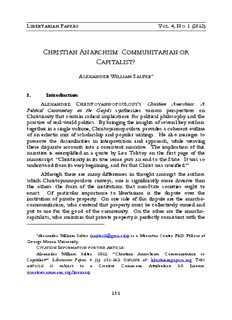
C ANARCHISM COMMUNITARIAN OR CAPITALIST - Libertarian Papers
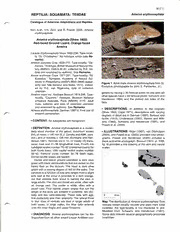
Ameiva erythrocephala
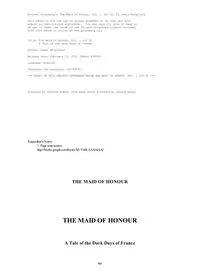
Maid of Honour A Tale of the Dark Ages Vol I
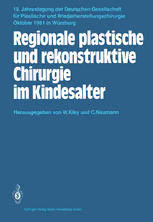
Regionale plastische und rekonstruktive Chirurgie im Kindesalter
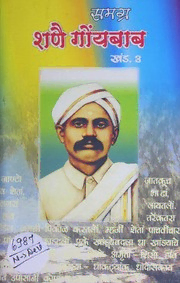
समग्र शणै गोंयबाब -3
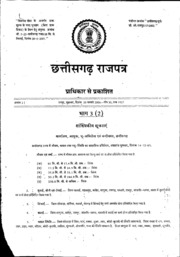
Chhattisgarh Gazette, 2006-01-20, No. 3, Pt. 3 (2)
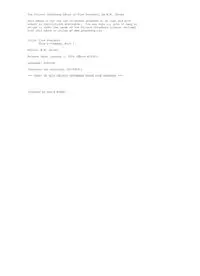
Ships Company Book 1

Greek Government Gazette: Part 2, 2006 no. 639

State of Health: Watauga County

C İL T 1, SA YI 1 OC AK 2018
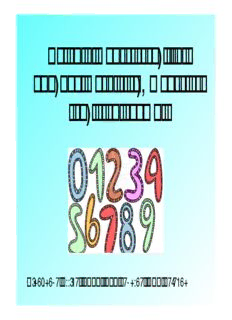
Calcolo mentale scritto
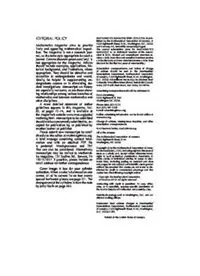
Mathematics Magazine 83 5
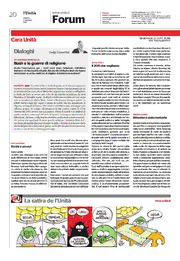
l'Unità (2011-01-08)
![[Report 1993] book image](https://cdn.pdfdrive.to/media/content/thumbnails/326f4df5-60df-45de-abf6-65c7d983e6b2.webp)
[Report 1993]

DTIC ADA527052: LIDAR Studies of Small-Scale Lateral Dispersion in the Ocean
